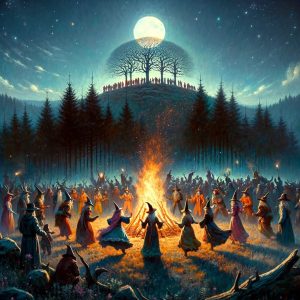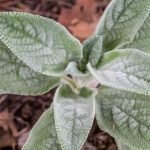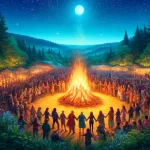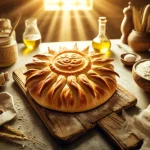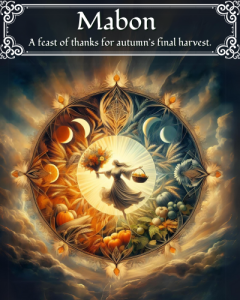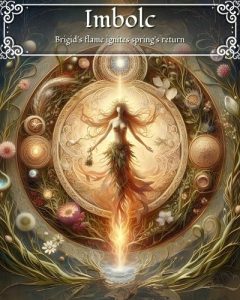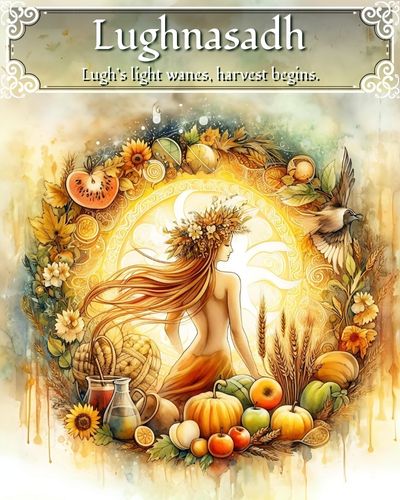
Approx. Reading time: About 3 Minutes

Introduction
Lughnasadh (LOO-nus-uh), also called Lammas, is known as one of the Greater Sabbats, it marks the beginning of the fall harvest. This is the festival of Lugh, a Celtic God of Light, Fire, and God of crafts and skills. As fall approaches and the hours of sunlight begin to shrink, the God begins to lose his strength. At this time the Goddess is already pregnant with the God, who will be reborn again at Yule.
In Lughnasadh, we celebrate the fruits of the Sun Gods and Mother Earth’s bounty. Their labours are everywhere, in the vegetables, plums, onions, garlic, and especially herbs which now will be at their most potent and which will be used in our magical practices.
Lughnasadh is also known as the Feast of Bread because baking is traditional on this day. The name Lammas comes from an old English festival, the loaf mass, which was held on this date. Wiccans often hold feasts in honour of the holiday because everything is so plentiful at this time of the year.
It is a time not only to think about the fruits of the Sun God and Mother Earth but also about our own personal harvest. A time when we think about what has happened in our lives and let go of anger, injustice, hates, and past regrets, enabling us to move forward to plant our own new seeds.

Lughnasadh Activities
- Bake a loaf of bread.
- Place an ash leaf under your pillow for prophetic dreams.
- Decorate sheaves of grain with flowers or ribbons.
- Leave offerings of bread to the Fairy Folk.
- Leave offerings of bread or wine for the pregnant goddess, and the Sun God.
- Share a feast with family or coven members.
- Eat a meal of fruits and vegetables of the season.
- Private Meditation on the meanings of the season.
- If you have a spring or well in your area, bless it and decorate it with flowers.
- Float flowers at a local creek or pond
- Plant the seeds from the fruits consumed during the feast.
- Celebrate the first harvest by eating a meal with foods of the season, such as grain and corn.
- Bless your garden, vegetables, fruits, and grains.
- Gather the tools of your trade and bless them in order to bring a richer harvest next year.
- Sacrifice bad habits and unwanted things from your life by throwing symbols of them into the Sabbat fire.
- Harvest fruits from your garden
- Play a game such as rhibo (a Welsh game) which is traditionally played at Lammas. Three pairs of people face each other and hold hands. A person is then laid across the hands and tossed into the air in much the same way grain is winnowed. For little ones use a blanket with two adults holding the corners. Be sure to be careful not to “toss” anyone too high!!!
- Begin gathering and drying herbs, flowers, grains, or seeds for spellworking in the next year.
Deity’s Portfolio
- Division: Major Sabbat
- Other Names: Lammas, Lughnasad, Lugnassad, Lunasa, Lughnasa, Festival of Green Corn, First Harvest, Ceresalia, August Eve, Elembiuos, Feast of Cardenas
- Southern Hemisphere Date: Feb 2
- Northern Hemisphere Date: August 1
- Associated Holiday: First Harvest
- Associated Deities: Ceres, Demeter, the Corn Mother, Lugh, the Green Man
- Associated Herbs: All herbs and grains
- Associated Stones: Carnelian, Yellow Diamonds, Aventurine, Peridot, Citrine, and Sardonyx, golden topaz, opal, citrine, and ametrine.
- Symbols of Lughnasadh: Sickles and scythes, Weapons, Armors, Corn dolls, Grapes, and Wine
- Foods of Lughnasadh: Corn, Potatoes, homemade bread, nuts, rice, apples, berry pies, barley cakes, roasted lamb, Grains, acorns, oats, crab apples, squash, turnips, and Berries.
- Drinks of Lughnasadh: Elderberry Wine, Mead, Ale, Meadowsweet Tea, and Cider
- Incense of Lughnasadh: Aloes, Rose, Sandalwood.
- Ritual Oils: Eucalyptus, Corn, Safflower
- Colors: of Lughnasadh: Red, orange, gold, and yellow. Also green, citrine, and gray.
- Taboos: Not Sharing Food
- Plants: Corn, Rice, Wheat, Ginseng, Rye
- Element: Fire
- Activities: Share a feast with family or coven members, plant seeds, and bake bread
- Animals: Roosters, Calves, and Pigs (sows in particular)
- Mythical Creatures: Griffins, Basilisks, Centaurs, and Phoenix
- Celebration of: A Festival of not only life and bounty but of harvest and death, the complete cycle of life. A Feast dedicated to Earth Mother. Give thanks for what you have.
Use this code: “Handbook10” and save 10% Today!
Other Lughnasadh Resources
Recipes
Deeper Knowledge
Introduction Lughnasadh: Celebrating the First Harvest Lughnasadh is a significant festival in the Wheel of the Year celebrated by various pagan and Celtic-inspired traditions. As the first harvest festival, it marks the transition from summer to autumn and honors the bounty of the earth. In this article, we will explore the origins, traditions, and customs associated with Lughnasadh, as well as provide guidance on how to practice this sacred festival…














